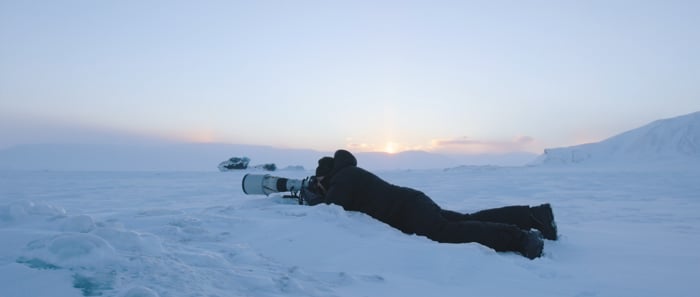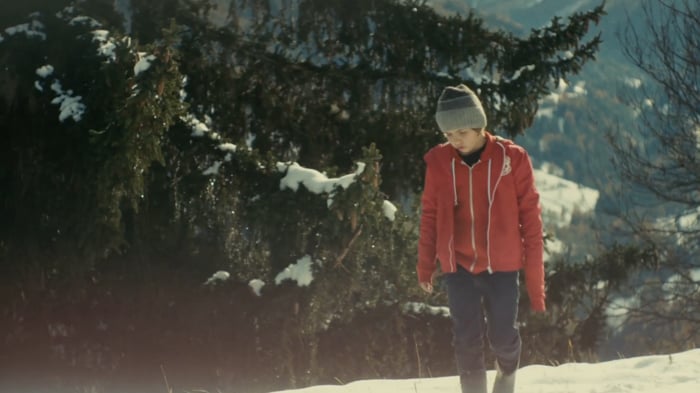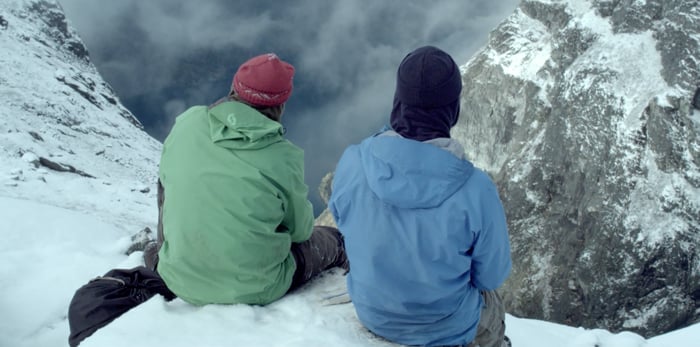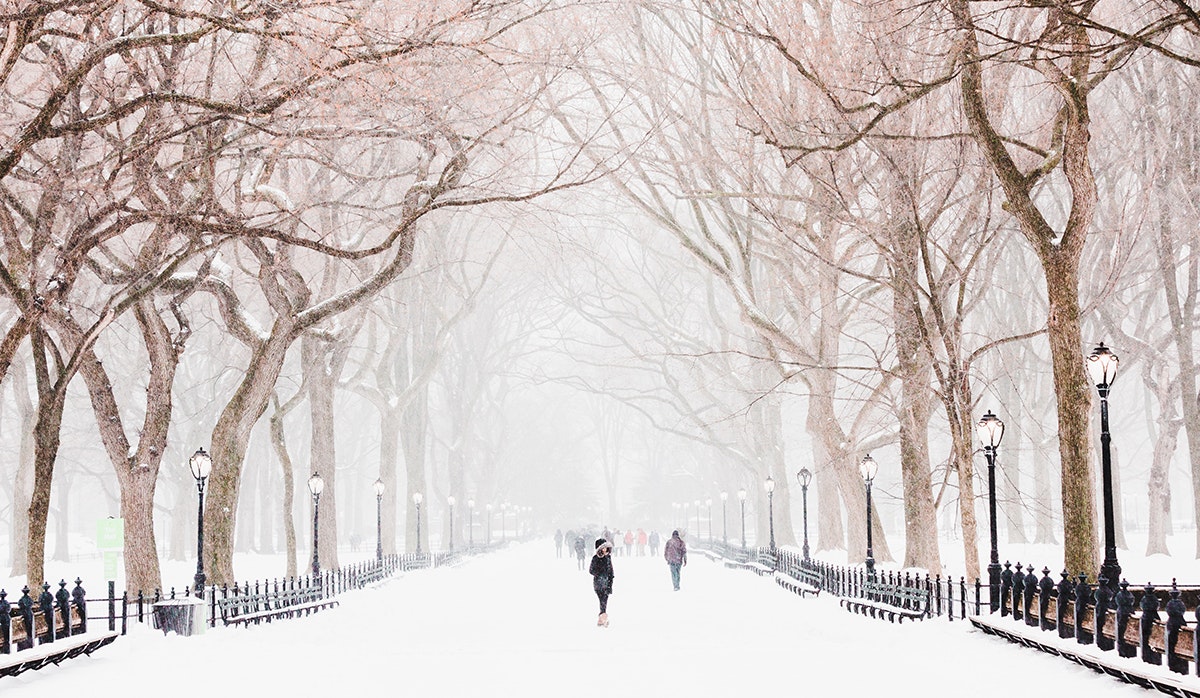It’s understandable that winter would make us want to put away the cameras and halt production until summer. But fear not! ‘Tis the season for big coats, snowball fights, and compelling winter light! In this post we’ll talk about how to use these frigid months and shorter days to your advantage.
Abraham Joffe does a brilliant job of capturing harsh snowy landscapes in the Arctic Circle.
More magic hour
The first major difference between summer and winter is the length of the days. The sun isn’t up for as long during winter, thus there’s less time to shoot in natural light. However, the cold weather provides some very intriguing color temperatures, as well as a longer “magic hour.”

If you’re not familiar with magic hour (or golden-hour), it is production’s loving expression for the time right after sunrise or right before sunset. During this window, the sun is low in the sky and has to pass through more atmosphere. This filters out blueish light, thereby giving off a softer, orange tones. This look is ideal for getting romantic, evenly exposed shots. In the winter months, magic hour starts earlier so you’ll have more time to capture those jaw-dropping landscapes.

As dreary as the winter atmosphere can seem, it’s actually a blessing in disguise for cinematography. Overcast skies and muted colors act as a natural diffusion, casting unusual shadows and soft light over your subjects. Rather than using an auto-white balance setting, adjust your color temperature to 5500K so that you’re balancing more closely to the natural warm tones of winter.

It’s OK to be shady
In the winter the sun stays lower in the sky, thus light comes in at more appealing angles throughout the day. This casts softer shadows, unlike the harsher contrast in the summer months. This low angle of the sun isn’t good for maintaining your tan, but it is great for adding texture and three-dimensionality to your subjects. In this type of low light, shadows are more elongated, dramatic, and generally appear in more unusual ways. Shadows like this bring wonderful elements of tension to a scene, so take advantage of these fascinating, natural effects and use them to elevate the drama of your scenes.
Check out Samuel Grandchamp’s excellent use of color in a winter backdrop.
Color your world
Winter offers some great “organic” subjects. Sparkling snow, dripping icicles, and naturally damp grounds can add some serious establishing shot beauty, or serve as wonderful background accents in your scenes. Skies and clouds are also much more dramatic, because of the extra distance the sun’s light is traveling through the atmosphere. You’ll notice clouds take on a more orange hue around their edges, pop off the blue or gray winter sky, and stand out in contrast to a snowy landscape or desolate forest scene.

Because scenery tends to stick to a gray scale in the winter due to lack of vegetation, vibrant colors pop way more. Think of a red winter coat on a dreary day, a bright green car after a blizzard. Use this to your advantage and choose colors to contrast the muted colors of winter. Make sure you set your aperture and ISO to expose for the brightest spots in your composition so that your camera doesn’t clip the whites of snow banks.

Summing it up
Winter makes us want to curl up on the couch with a hot drink, maybe some takeout, and binge watch television until the warm weather comes back. But, please — for the sake of beautiful videos — get out there and shoot in the gorgeous light that only winter provides. And of course, make sure to
upload them to Vimeo!
If you’re keeping things mostly indoors for the chilly months, delve into our lesson on perfecting your office lighting. As always, if you have your own tips for harnessing that winter light, share in the comments below.
 If you’re not familiar with magic hour (or golden-hour), it is production’s loving expression for the time right after sunrise or right before sunset. During this window, the sun is low in the sky and has to pass through more atmosphere. This filters out blueish light, thereby giving off a softer, orange tones. This look is ideal for getting romantic, evenly exposed shots. In the winter months, magic hour starts earlier so you’ll have more time to capture those jaw-dropping landscapes.
If you’re not familiar with magic hour (or golden-hour), it is production’s loving expression for the time right after sunrise or right before sunset. During this window, the sun is low in the sky and has to pass through more atmosphere. This filters out blueish light, thereby giving off a softer, orange tones. This look is ideal for getting romantic, evenly exposed shots. In the winter months, magic hour starts earlier so you’ll have more time to capture those jaw-dropping landscapes.
 As dreary as the winter atmosphere can seem, it’s actually a blessing in disguise for cinematography. Overcast skies and muted colors act as a natural diffusion, casting unusual shadows and soft light over your subjects. Rather than using an auto-white balance setting, adjust your color temperature to 5500K so that you’re balancing more closely to the natural warm tones of winter.
As dreary as the winter atmosphere can seem, it’s actually a blessing in disguise for cinematography. Overcast skies and muted colors act as a natural diffusion, casting unusual shadows and soft light over your subjects. Rather than using an auto-white balance setting, adjust your color temperature to 5500K so that you’re balancing more closely to the natural warm tones of winter.
 Check out Samuel Grandchamp’s excellent use of color in a winter backdrop.
Check out Samuel Grandchamp’s excellent use of color in a winter backdrop.
 Because scenery tends to stick to a gray scale in the winter due to lack of vegetation, vibrant colors pop way more. Think of a red winter coat on a dreary day, a bright green car after a blizzard. Use this to your advantage and choose colors to contrast the muted colors of winter. Make sure you set your aperture and ISO to expose for the brightest spots in your composition so that your camera doesn’t clip the whites of snow banks.
Because scenery tends to stick to a gray scale in the winter due to lack of vegetation, vibrant colors pop way more. Think of a red winter coat on a dreary day, a bright green car after a blizzard. Use this to your advantage and choose colors to contrast the muted colors of winter. Make sure you set your aperture and ISO to expose for the brightest spots in your composition so that your camera doesn’t clip the whites of snow banks.


